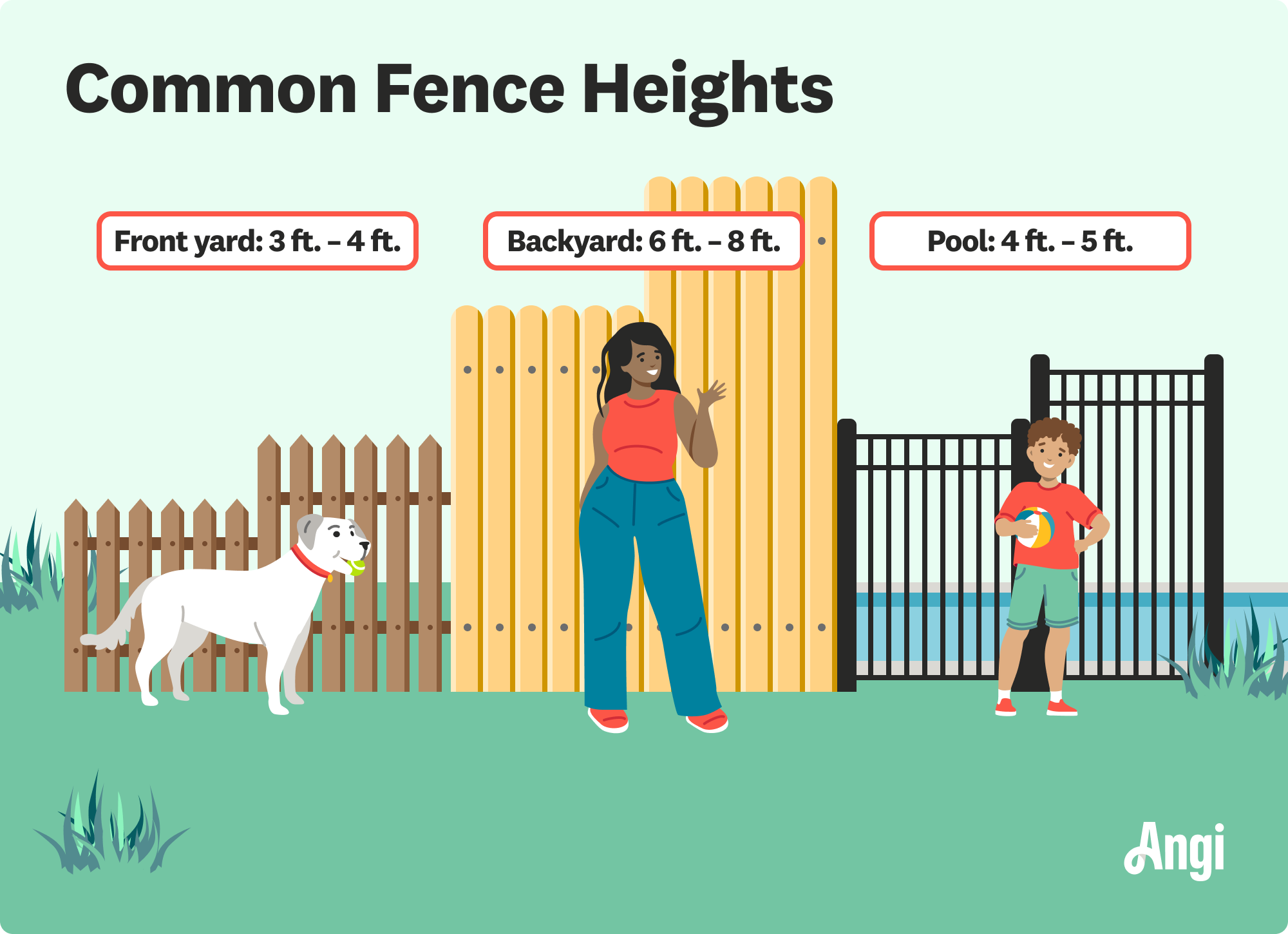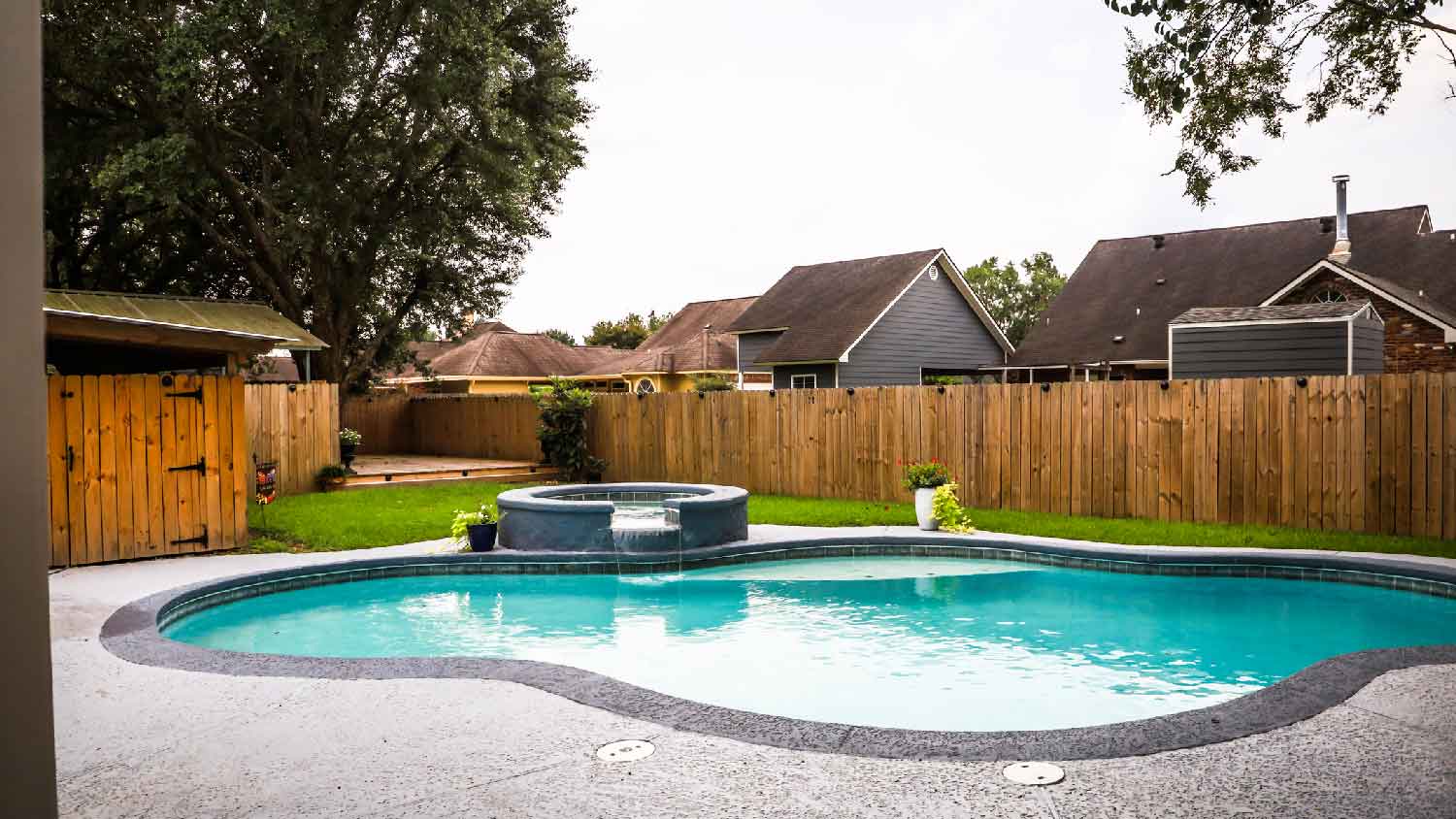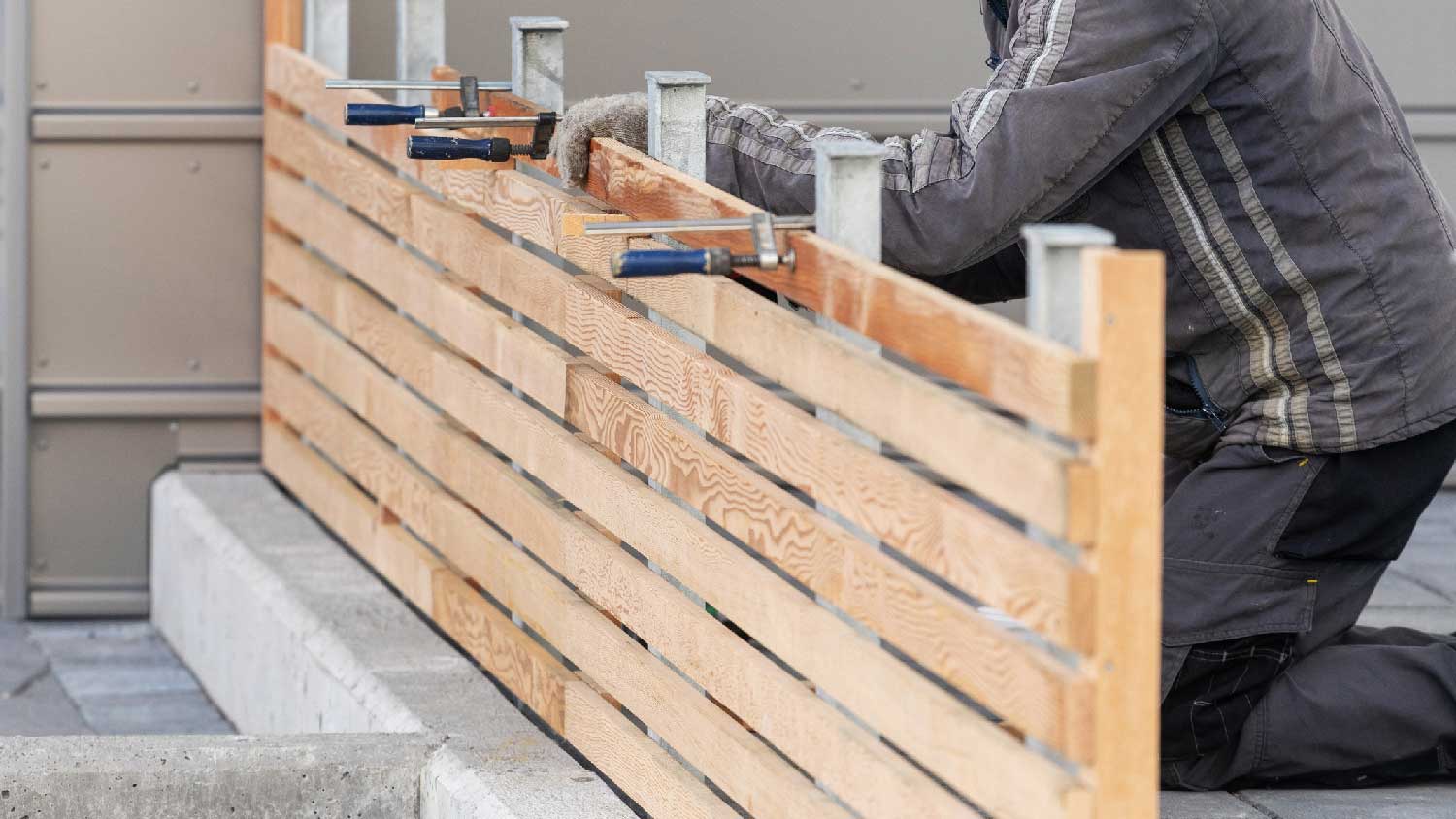
Explore the key factors that impact vinyl fence installation costs in Columbus, OH, including labor, materials, permits, layout, design, and yard conditions.
Make sure your fence measures up


For residential properties, standard fence heights range from 3 to 8 feet.
Your fence’s height will depend on a few factors, including its location and purpose.
Most front yard fences are 3 to 4 feet tall, and backyard fences are 6 to 8 feet in height.
In many areas, pool fences must be at least 4 feet tall.
If you aren’t sure how tall your fence should be, contact a professional fence installer.
Whether you’re adding a fence for privacy, safety, or aesthetics, choosing the right height is an important part of the process. So, what is the ideal height for a fence? It all depends on why you’re installing it and where it’s located on your property. Let’s look at the standard fence heights for a few different types, including front yard and backyard fences.

Fence heights depend on the purpose and location of the fence. However, most residential fences stand between 3 and 8 feet tall.

A fence’s location can affect its height. For example, front yard fences are often shorter than backyard fences because people want to maintain some visibility in front of their house but prefer more privacy in their backyard. Here are the standard heights for three common fence types.
| Fence Location | Standard Height |
|---|---|
| Front yard | 3–4 feet |
| Backyard | 6–8 feet |
| Pool | 4–5 feet |
Front yard fences offer quite a few benefits, including keeping kids and pets from wandering onto the street and preventing strangers from walking up to your door. Some front yard fences (think: picket fences) can even boost your home’s curb appeal.
Front yard fences are rarely intended to provide complete privacy, so they’re only 3 to 4 feet in height.
Backyard fences are also good for containing children and pets, but they’re used to create boundaries with neighbors and make your outdoor space more private, too. For that reason, backyard fences are 6 to 8 feet tall.
Depending on where you live, you might be required to install a fence around your pool. These fences add an extra level of safety around your pool—which is especially important if you have young kids or pets. In most cases, in-ground pool fences should be at least 4 to 5 feet in height.
Let’s say you want to replace your current fence with a new one of the same height. The only problem? You don’t know how tall the old fence is. Before you start buying the materials to build a new fence, here are some tips for measuring the old one:
Start at ground level and measure upward until you hit the highest part of the fence. Depending on the design of your fence, the tallest point might be the pickets, posts, cap board, or a decorative element (like lattice).
Don’t measure any part of the fence that’s buried underground.
If the ground is uneven, measure several different points along the fence to make sure you get the real height of your fence.
Keep in mind: You’ll only have to take these measurements if you’re DIYing this project. If you hire someone to build a fence, they’ll handle this type of work.
Whether you’re replacing a worn-out wood fence in your backyard or building a glass fence around your new pool, there are a few things to consider before choosing a fence height.
Your city, county, state, or homeowners association (HOA) will have rules about how tall your fence can be. These requirements vary by location, but it’s common for front yard fences to be limited to 4 feet in height and backyard fences to be no higher than 6 feet. In some cases, you can exceed these limits, but you may need a special permit. (Heads up: Certain jurisdictions require a permit to build any fence—regardless of its height.)
Taller fences are more expensive to build than shorter ones due to the extra materials and labor required. For example, installing a 4-foot-tall chain-link fence costs $8 to $20 per linear foot, while building an 8-foot-tall chain-link fence costs $12 to $34 per linear foot. If you’re on a budget, consider installing a shorter fence.
From providing privacy to improving security, fences can serve many different purposes. To help you decide the right height for your fence, consider your reasons for installing it.
For example, if you’re adding a fence for decorative purposes, it doesn’t need to be as tall as a privacy fence would be. Alternatively, maybe you need a fence to keep your dog in your yard. A 4-foot fence is often good enough for smaller breeds, but larger dogs require a 6-foot fence. Want to keep deer out of your yard? You’ll need at least an 8-foot fence.
If you aren’t sure which height is best, reach out to a fencing pro near you. Once you explain the purpose of your fence, they can recommend the most appropriate height.

Realizing that your fence is too short or too tall isn’t ideal, but it’s often fixable. Here are some tips for dealing with a fence that’s the wrong height.
If your fence is shorter than you’d like, there are ways to make it taller. To extend your fence’s height for more privacy, you can:
Attach additional fence boards
Install a trellis or lean-in fence topper
Put up a privacy screen
Add post extenders
Remember: Many localities have restrictions on fence heights. Before deciding to extend your fence, make sure it will comply with the fence height limits for your area.
On the other hand, what should you do if your fence is taller than you’d like or exceeds local height restrictions? Whether you built the fence yourself or hired someone to install it, you should call a pro to fix or replace the fence. If you try to shorten it yourself, you could damage the fencing material or end up with an uneven fence.
From average costs to expert advice, get all the answers you need to get your job done.

Explore the key factors that impact vinyl fence installation costs in Columbus, OH, including labor, materials, permits, layout, design, and yard conditions.

Chain-link fences are among the most affordable options available. Use this chain link fence cost guide to see what your fence installation will total.

A fence can be a beautiful and functional addition to your property. Learn all the factors that determine your fence installation costs in Columbus, OH.

Whether you’re looking to replace your chain link fence or just want it gone, find out how to remove a chain link fence here.

Looking for a little more seclusion in your yard? No problem. Learn how to cover a metal gate for privacy with a few simple tricks and tips.

Choosing a vinyl, PVC, or plastic fence offers benefits over wooden fencing, like improved durability. Learn about the many types of vinyl fencing available.